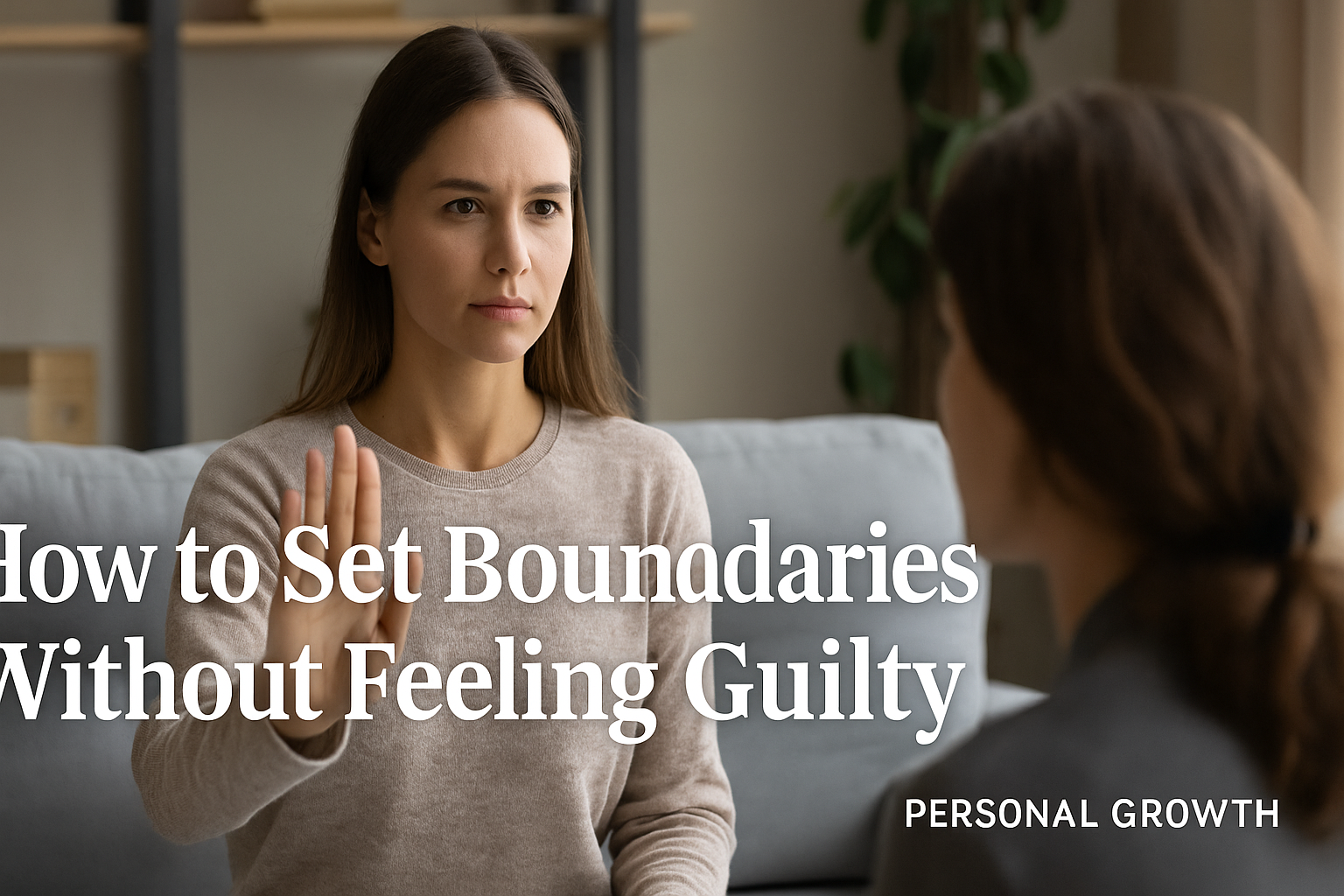Setting boundaries is essential for healthy relationships, emotional well-being, and personal productivity. Yet for many people, it feels hard—even selfish. Guilt creeps in, especially when you’re used to being the one who always says “yes.”
But here’s the truth: boundaries aren’t walls. They’re bridges to better communication, trust, and self-respect.
In this article, you’ll learn how to set clear, kind boundaries—and release the guilt that holds you back.
What Are Boundaries?
Boundaries are the limits you set to protect your time, energy, values, and well-being.
They can be:
- Physical: “I don’t want to be touched without consent.”
- Emotional: “I’m not available for venting right now.”
- Time-based: “I don’t respond to work emails after 6 PM.”
- Mental: “I choose not to discuss certain topics.”
- Digital: “I don’t check social media during work hours.”
They’re not about controlling others. They’re about clearly communicating your needs.
1. Recognize the Cost of No Boundaries
When you say yes to everything, you end up:
- Overwhelmed and burned out
- Resentful of others
- Disconnected from your own needs
- Constantly putting yourself last
- Unable to focus on what really matters
Boundaries aren’t selfish—they’re self-respect in action.
2. Identify Where You Need Boundaries Most
Ask yourself:
- What situations leave me feeling drained or frustrated?
- Who do I struggle to say no to—and why?
- When do I ignore my own needs to avoid discomfort?
- Where in my life do I feel out of control?
Start with one area (e.g., work, family, social media) and build from there.
3. Communicate Clearly and Calmly
Use assertive, respectful language. Try:
- “I can’t commit to that right now.”
- “I’m working on protecting my time and energy—thanks for understanding.”
- “That doesn’t work for me, but I appreciate the invite.”
- “I’m not comfortable with that.”
- “Let me think about it and get back to you.”
You don’t need to over-explain. Clear is kind.
4. Expect Guilt—and Move Through It
Guilt is a natural reaction when you’re not used to prioritizing yourself. But not all guilt is useful.
Ask:
- “Am I actually doing something wrong—or just something unfamiliar?”
- “Is this guilt based on someone else’s expectations or my truth?”
- “What would I tell a friend who needed this boundary?”
Feel the guilt—and keep the boundary.
5. Set Consequences (and Follow Through)
Some people will test your boundaries. That doesn’t mean you did it wrong.
Make your limits meaningful by following through:
- “If you raise your voice, I’ll leave the conversation.”
- “If I’m working, I won’t respond to non-urgent texts until after 6 PM.”
- “If this continues, I’ll need to step back from this relationship.”
This isn’t punishment—it’s protection.
6. Practice Self-Compassion
Setting boundaries is a skill, not a personality trait. You’ll mess up. You’ll say “yes” when you meant “no.” That’s okay.
Instead of judging yourself, say:
- “I’m learning to honor my needs.”
- “This feels hard because it’s new—not because it’s wrong.”
- “Progress, not perfection.”
Growth requires grace.
Final Thought: Boundaries Are a Form of Love
When you set boundaries, you’re not pushing people away. You’re inviting healthier, more respectful relationships—with others and yourself.
You deserve to take up space. To protect your time. To rest without guilt. To choose yourself without apology.
Start small. Stay kind. Hold the line.

